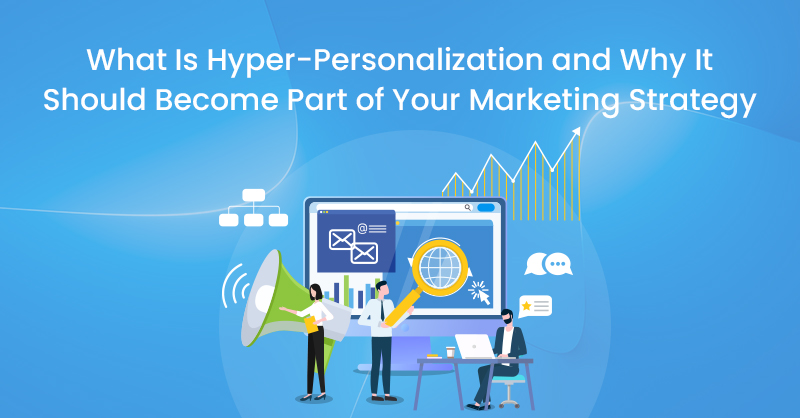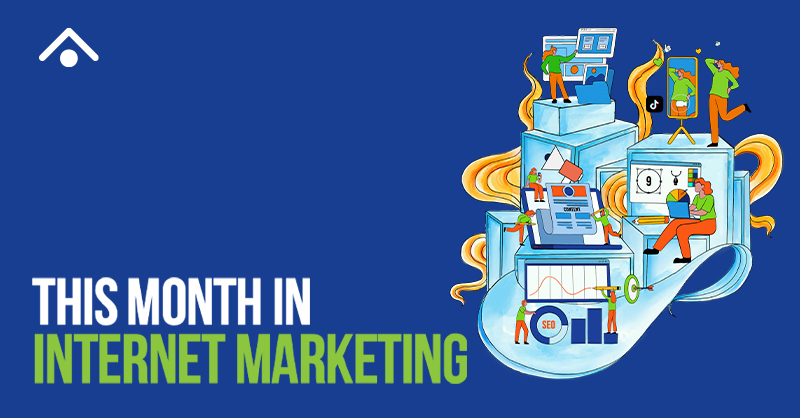Today’s customers want everything tailored to them. They want you to address them by name, remember their preferences, and deliver experiences customized to their needs. Over the past couple of years, businesses responded to this by offering personalized customer experiences.
However, with everyone jumping on the personalization bandwagon, simple personalization is no longer enough. Brands that want to stay ahead of the curve are now leveraging data, analytics, and artificial intelligence to deliver hyper-personalized experiences. Hyper-personalization has even been highlighted as one of the digital marketing trends that will shape 2023.
In this article, we’ll explain what hyper-personalization is and give six reasons why you should make it part of your marketing strategy.
What is Hyper-Personalization?
Hyper-personalization is an advanced level of personalization that takes advantage of big data, artificial intelligence, and analytics to deliver products, content, and experiences tailored to each customer’s unique needs, preferences, and context – in real-time.
To make it easier to understand, let’s compare hyper-personalization to regular personalization. Regular personalization typically uses simple data like a customer’s name, geographic location, demographic data, and search and purchase history.
Hyper-personalization, on the other hand, takes things a notch higher. In addition to the simple data used for regular personalization, hyper-personalization also looks at more advanced and complex data, such as a customer’s purchasing behaviour, browsing activity, response rates to different kinds of notifications, their active times, and so on. It then uses AI to analyze this data and derive insights that help businesses deliver highly-customized campaigns.
Hyper-personalization goes beyond segmentation. Instead of delivering customized experiences and offers to groups of customers with shared characteristics, hyper-personalization requires you to provide experiences tailored to each individual customer.

Source: Capgemini
Netflix is an excellent example of a company that has mastered hyper-personalization. Netflix doesn’t just rely on users’ streaming history to recommend new shows.
Instead, it uses multiple data points to recommend the best movies for each individual user. These include all the movies a user has watched, whether they completed the movie, how long they watched it, the point at which they stopped watching, the scenes they rewatched or fast-forwarded, the times they like watching different kinds of movies, and so on.
The result of such personalization is that the majority of Netflix users watch 70% of shows based on the platform’s hyper-personalized recommendations, compared to 30% based on search.
Why You Should Make Hyper-Personalization Part of Your Marketing Strategy
Hyper-personalization is very important, especially in digital marketing. Some of the benefits of adopting hyper-personalization in your marketing strategy include:
1. Increased Revenue
According to a Deloitte report, 90% of consumers say that they find brands that deliver highly-personalized experiences more appealing. A 2021 McKinsey report also found that 78% of consumers are more likely to purchase from brands that offer personalized experiences.
Think about it this way; you have two coffee shops you frequent regularly. In one, the barista knows what drink you like and how exactly you like it. When you come in, the staff greet you by name, show you to a seat in the section you like, and bring your favourite drink without you having to order.
In the other coffee shop, the staff don’t greet you by name, they don’t care where you sit, and you have to make your order every time and specify how you want it made. Which of the two shops are you more likely to keep frequenting? The first one, of course!
Offering a hyper-personalized experience shows your customers that you actually care for them, which in turn makes them more likely to spend more and become repeat customers. According to a personalization maturity index by Boston Consulting Group, brands that adopt a highly-personalized strategy see up to a 25% increase in revenue.
2. Better Customer Experience
Another great benefit of hyper-personalization is that it eliminates irrelevant stuff. Your customers don’t have to waste their time reading through marketing messages that don’t apply to them or scrolling through products they aren’t interested in. This makes the whole experience much better for your customers.
Let’s say, for example, you have an online fashion store. Without a personalization strategy, a customer landing on your homepage will need to select their gender, select the kind of fashion items they are interested in, scroll through endless products, select a product, choose their size and preferred colours, and so on. All this can get cumbersome.
In contrast, with a hyper-personalized store, customers don’t have to go through all that. Once they land on your home page, your website automatically recommends products they might be interested in based on their gender, age, preferences, and what they bought last.
It even recommends products that match the customers’ size and color preferences. The result is a smooth customer journey, which is crucial to building an effective customer experience strategy.
3. Reduced Customer Churn
Acquiring a new customer is a lot more expensive than retaining an existing one. Therefore, businesses that want to reduce costs and improve profits can easily do so by focusing on keeping existing customers. Fortunately, hyper-personalization is one of the proven ways of reducing customer churn.

Studies show that 70% of consumers are more likely to be loyal to brands that understand their individual needs, while 71% are frustrated by impersonal shopping experiences. This means that hyper-personalization gets your customers to stick around for longer, while an impersonal experience could push your existing customers away.
4. Boosts Your Marketing ROI
Marketing is a huge business cost. Therefore, it makes sense for brands to try to get as much return as possible for every dollar invested in marketing. Hyper-personalization helps brands get more ROI from their marketing spend by targeting customers with highly customized, hyper-personalized messaging and products, leading to more conversions.
When you target all your customers with the same marketing messaging, this messaging will only be relevant to a small portion of your target audience. This means most of those who see your marketing message won’t convert, so you’re basically wasting your marketing spend.
With hyper-personalization, on the other hand, every customer receives a marketing message that’s super-relevant to them. When they visit your website, they see a landing page specifically tailored to them. They are then directed to a product that’s customized to meet their unique needs and preferences.
For instance, as a vendor, you might focus on offering Net 30 accounts to customers, meaning they’ll have an additional thirty days to pay for purchased goods. However, not all customers might be interested in this.
Some of your customers might be willing to pay immediately but want you to deliver the products to their customers at no cost. With hyper-personalization, you can target these two customers with different marketing messages based on their different needs.
Such a high level of personalization leads to higher conversion rates, translating to more ROI for every dollar you put into marketing.
5. Improves Your Net Promoter Score
Net Promoter Score is a metric used to measure how happy customers are with your brand and how likely they are to recommend it to their friends and family. Considering that consumers are more likely to trust word-of-mouth recommendations from people they trust – such as friends and family – compared to advertising, it’s crucial for every brand to focus on improving its Net Promoter Score.
Fortunately, hyper-personalization has been shown to contribute to good Net Promoter Scores. A personalization survey by Boston Consulting Group found that customers who received hyper-personalized experiences rate brands up to 20% higher on the Net Promoter Score compared to those who receive impersonal experiences.

Source: Boston Consulting Group
6. Shift from Static to Dynamic Targeting
One of the disadvantages of traditional personalization and segmentation is that it is static. Once you collect data about a customer and place them into a customer segment, you continue using the same data to target the customer years down the line.
However, this approach ignores one key thing – customer needs, preferences, and behaviours aren’t static. They keep changing from time to time.
For instance, a customer who was in college last year might have graduated and gotten a job this year. This significant life change will also affect their needs and buying choices. Unfortunately, if they’re still in the student segment, you’ll continue targeting them with offers that are no longer relevant to them.
In contrast, hyper-personalization doesn’t place customers into segments. Instead, it constantly collects data about each individual customer and uses this data to customize the customer’s experience in real-time. Therefore, your targeting remains relevant even when the customer’s needs and preferences change since it’s based on up-to-date data.
Wrapping Up
Hyper-personalization is no longer a luxury. Any brand that wants to remain competitive over the next decade has to invest in providing its customers with the right experiences that meet their unique expectations. Fortunately, with technologies like artificial intelligence advancing each day, it will become easier for everyone – including small brands – to leverage big data and analytics to deliver highly customized customer experiences.
Now is the right time if you’re yet to jump on the hyper-personalization train. Making it part of your marketing strategy will help you increase your revenue, provide better customer experiences, reduce customer churn, and boost your marketing ROI.
It will also help you shift from static to dynamic targeting and boost your Net Promoter Score, which can lead to more recommendations and referrals from your existing customers.






